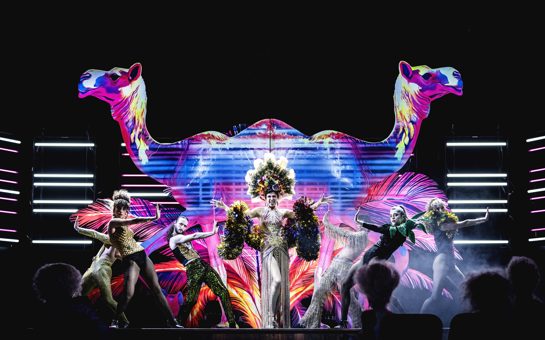- John Cage
Apartment House 1776 (1976)
- Henmar Press, Inc. (World)
- Materials for a “musicircus” for any number of musicians, in observance of the Bicentennial of the USA to which are added, live or recorded, Protestant, Sephardic and American Indian songs, and Negro calls and hollers, to be played with or without “Renga”. The 44 Harmonies and 14 Tunes from “Apartment House 1776” are available separately. The 44 Harmonies may be played on any keyboard instrument; the 14 Tunes may be transposed and played on any instrument. / indeterminate duration
Programme Note
APARTMENT HOUSE 1776 by John Cage is a type of musical event that Cage dubbed a musicircus. Simply put, a musicircus is the simultaneous performance of several different musical works within a given space and time in which no attempt is made to coordinate or synchronize performances. Cage derived the name from the three-ring circus wherein three different acts are performed at the same time. A musicircus is ideally performed as an installation in which the audience can circulate through the space and stop and listen wherever and whenever they please.
APARTMENT HOUSE 1776 was commissioned and premiered independently by six different orchestras/ensembles to celebrate the bicentennial of the United States: the Boston Symphony Orchestra, the Cleveland Orchestra, the Chicago Symphony Orchestra, the Los Angeles Philharmonic, the New York Philharmonic, and the Philadelphia Orchestra. It meant to evoke the cultures and traditions present at the birth of America through disparate musical statements and styles, mingled as if overheard from open windows in a modern apartment building.
This work is for any number of musicians, but it must include four singers (or recordings) each representing a different religious or ethnic group: Protestant, Sephardic, Native American, and African American. There is no written part for the singers, who are asked to choose works from their own repertoire. For the 1976 premiere in New York, the New York Philharmonic used singers that were members of the religious and ethnic groups specified by the composer, but they do not need to be.
There are also 14 Tunes, 4 Marches, 44 Harmonies (hymns) and 2 Imitations, played by the instrumentalists. These written parts are all derived from 18th Century sources such as hymn books and a drum method book. Cage either subtracted notes via chance operations, wrote variations, or simply transcribed the original material.
Any of the various ensembles that comprise the group may use a conductor. The duration of the piece is decided beforehand and is at the discretion of the performers.
APARTMENT HOUSE 1776 can be performed simultaneously with another Cage work, RENGA, which is scored for 78 instruments or voices or any combination of thereof. The score and the parts are graphic, based on drawings from Thoreau’s journals. This work would be another element of the musicircus, and it was included in the 1976 premiere performances.
Media
Scores
Features

- Opera Season Highlights 2025-26
- Discover operatic highlights from Wise Music Classical during the 2025-26 season test

 Located in the UK
Located in the UK
 Located in the USA
Located in the USA
 Located in Europe
Located in Europe